Did you know that after menopause, the symptoms of cervical cancer can vary?
Most women know the importance of regular pelvic exams and having an annual Pap smear to detect any possible changes in their reproductive health. However, what many don’t know is that these screenings can also be used to detect the beginnings of cervical cancer. Cervical cancer is a type of cancer that affects women, and it’s one of the most common forms of gynecological cancer in the world.
Being aware of its causes and symptoms is key to proper diagnosis and treatment. In this article, we will explore what symptoms are linked to cervical cancer and how they can be detected.
MedicoExpert Tumor Board is committed to providing the information and resources you need to stay informed about issues related to your reproductive health. Our mission is to help women make decisions that are right for their bodies and to empower them with the knowledge they need to take charge of their health.
Let’s dive in!
Cervical cancer is one of the most preventable gynecological cancers, yet it’s still the fourth most common cancer among women worldwide.
What is Cervical Cancer?
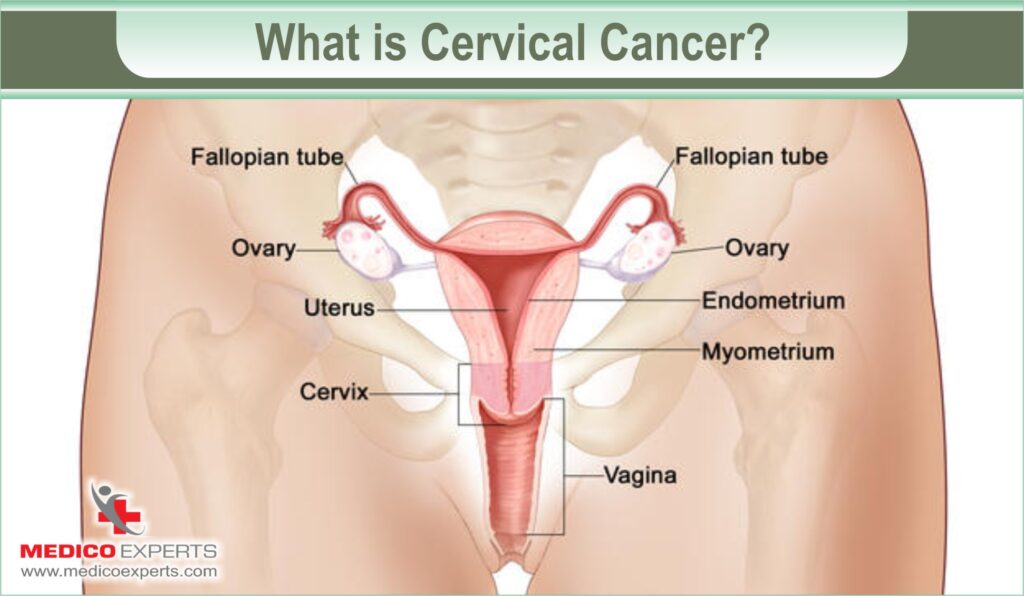
Cervical cancer is a specific form of cancer that develops in the cells of the cervix, which is the lower part of the uterus connecting to the vagina.
The cervix is a passage that connects the uterus to the vagina, which is the birth canal. Typically, cervical cancer progresses slowly over some time.
When there are changes called dysplasia in the cells of the cervix, it means that abnormal cells are appearing in the cervical tissue. If these abnormal cells are not removed or destroyed, they can eventually turn into cancer cells and spread to surrounding areas by growing deeply into the cervix.
How Does It All Begin?

The primary cause of cervical cancer is the presence of certain strains of the human papillomavirus (HPV), which is a sexually transmitted infection. Usually, when exposed to HPV, the body’s immune system successfully prevents the virus from causing harm.
To clarify, the cervix has two distinct parts:
- The Ectocervix (or exocervix), which is the outer part visible during a gynecological exam and covered with squamous cells; and
- The Endocervix is the inner part forming a canal between the vagina and uterus and is covered with glandular cells that secrete mucus.
The border where the two parts meet is called the squamocolumnar junction or transformation zone, and it’s where most cervical cancers start.
However, in a small percentage of individuals, the virus can persist for an extended period, contributing to the process that transforms certain cervical cells into cancerous cells.
Now let us see the warning signs and symptoms of cervical cancer.
What Are the Symptoms of Cervical Cancer?
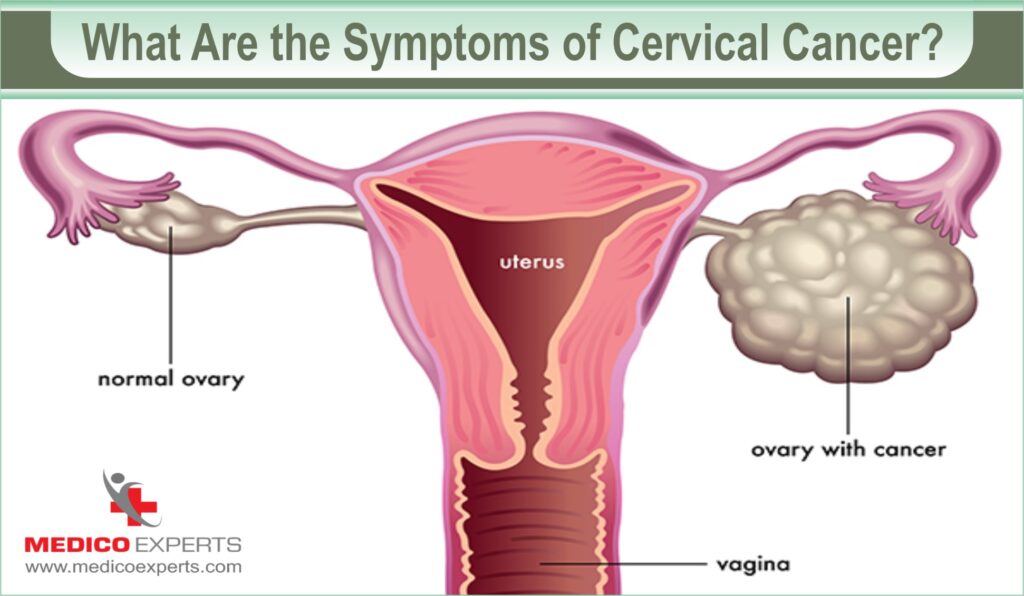
Symptoms and signs play crucial roles in identifying medical issues. Symptoms refer to changes felt within the body, while signs are measurable changes observed through methods like blood pressure readings or lab tests.
Together, they contribute to describing a medical problem. It’s important to note that the cause of a symptom or sign may not always be cancer; therefore, seeking medical care is vital when experiencing new or persistent symptoms or signs.
5 Warning Signs of Cervical Cancer:
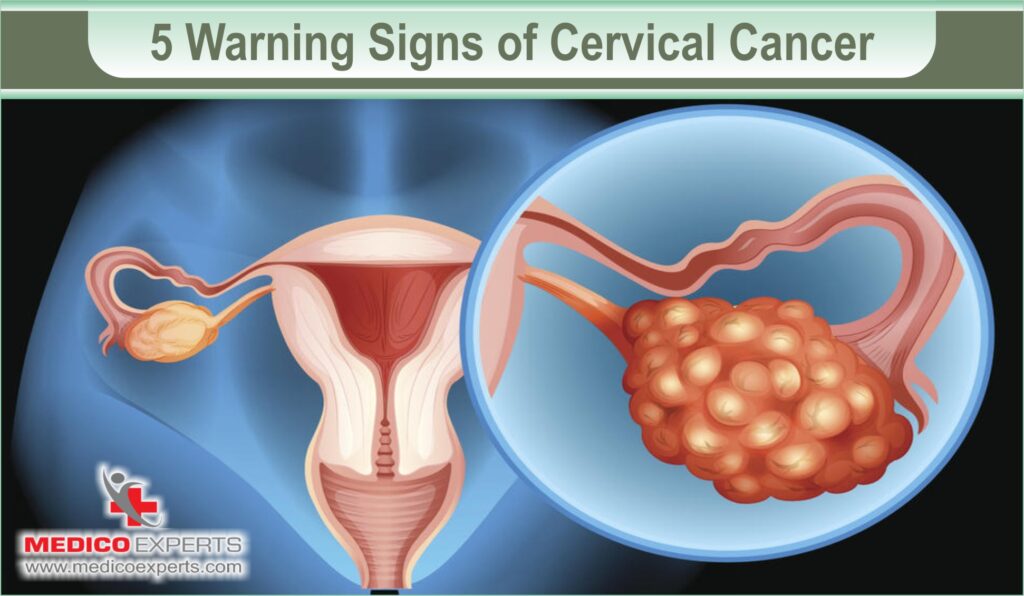
1. Abnormal or irregular vaginal bleeding:
Women may experience spotting or bleeding between their menstrual cycles, after intercourse, or after menopause. This is usually the first sign of cervical cancer and should be checked out immediately.
2. Unusual vaginal discharge:
Some women may experience vaginal discharge that is watery, bloody, or foul-smelling. In some cases, this could signify the presence of cervical cancer.
3. Pelvic pain or discomfort:
Pain in the pelvis that does not go away for an extended period of time may indicate cervical cancer. It’s important to note that this symptom may not be present until the cancer has progressed to a more advanced stage.
4. Painful urination or pain during intercourse:
Some women may experience pain when urinating or during intercourse. This could be a sign that cancer has developed in the cervical cells, and should be checked out immediately.
5. Unintentional weight loss or fatigue:
Unexpected weight loss, along with chronic fatigue, could be a sign that cervical cancer is present. It’s important to seek medical advice if these symptoms persist for an extended period.
Additional symptoms of cervical cancer are listed as follows:
- A menstrual period that is longer and heavier than is typical for the individual’s cycle
- Bleeding after douching, or pelvic examination
- Unexplained and persistent pelvic and/or back pain
If any of these symptoms arise, it is essential to report them to your doctor. Even if they may appear to be symptoms of less severe conditions, discussing them with a healthcare professional is crucial. Detecting and treating precancerous cells or cervical cancer at an early stage increases the chances of prevention or cure.
Measures to Lower The Risk of Cervical Cancer
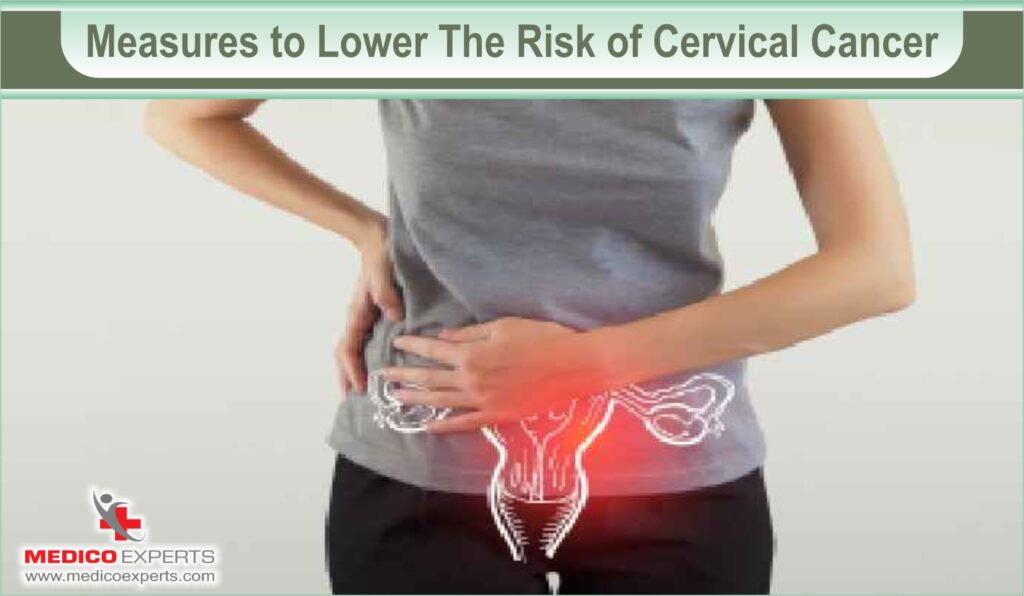
Taking proactive measures can help lower the risk of developing cervical cancer.
These measures include:
- Getting vaccinated against HPV,
- Practicing safer sex, and
- Avoiding multiple sexual partners.
- Additionally, attending regular gynecological check-ups and
- Having routine Pap smears can help detect cervical cancer in its early stages.
How Can Screening In Cervical Cancer Help?
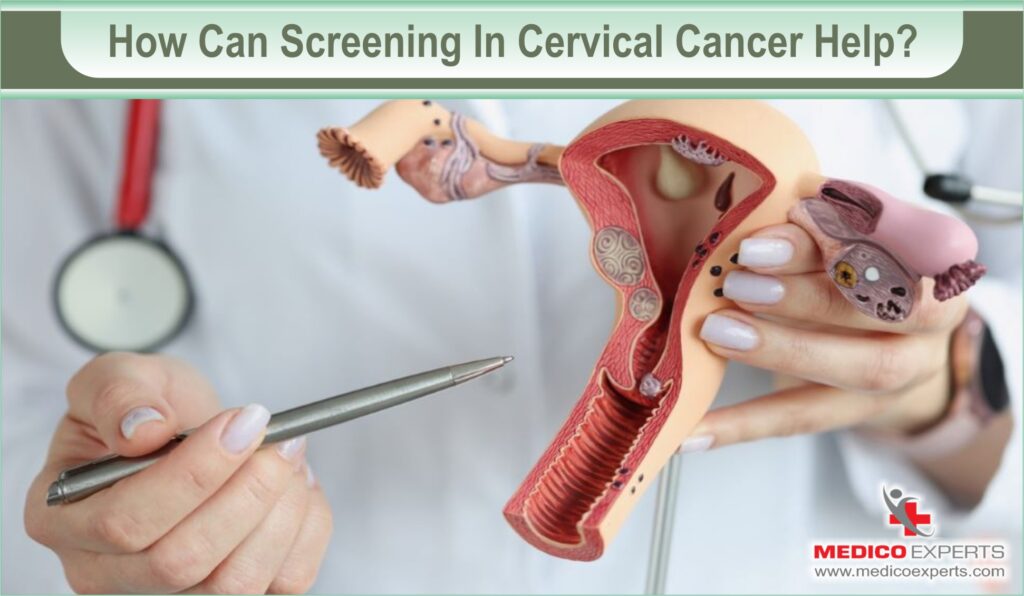
Cancer screening aims to identify precancerous changes or early stages of cancer before any symptoms appear. Various tests have been developed by scientists to screen for specific types of cancer.
1. Pap Test:
The Pap test is a screening tool used to detect any changes in the cells of the cervix. It can help identify cell abnormalities that may indicate precancerous changes or cervical cancer.
During a gynecologic checkup, a Pap test is performed by collecting cells from the cervix. This is typically done along with a bimanual pelvic exam. The Pap test is especially important for women over the age of 35, as it can help detect any potential problems before they become more serious. Women should get screened every three years between the ages of 21 and 65.
2. HPV test:
The test examines the cells taken from the cervix, the same cells collected during a Pap test, to check for strains of HPV that are usually linked to cervical cancer.
It can be done alone or together with a Pap test. This test can also be done on self-collected cells from the vagina.
3. Visual inspection with acetic acid (VIA):
The VIA test is a simple screening procedure that can be performed using basic tools and without the need for special equipment.
In this test, a mixture of white vinegar is applied to the cervix and examined by the healthcare provider for any abnormalities. The vinegar causes any irregularities on the cervix to turn white, making them easier to identify. This screening procedure is especially valuable in areas where medical resources are scarce.
*Note: You can get screened for cervical cancer by visiting a primary care doctor or gynecologic specialist. Free or low-cost screening may also be available in certain locations.
Learn more about the best cervical cancer treatment in India here…
Conclusion
If you have concerns about any changes you experience, it is advisable to consult your doctor. Your doctor will inquire about the duration and frequency of your symptoms, among other questions, to help determine the cause of the issue, leading to a diagnosis.
In the event of a cervical cancer diagnosis, managing symptoms remains a significant aspect of cancer care and treatment. This may involve palliative care or supportive care, which aims to alleviate symptoms. It is typically initiated shortly after diagnosis and continues throughout treatment. It is important to communicate with your healthcare team regarding any symptoms you experience, including new symptoms or changes in existing ones.
MedicoExpert Tumor Board has a team of experienced oncologists and other healthcare professionals to provide personalized care for patients suffering from cervical cancer. The team is committed to providing comprehensive and compassionate care throughout the treatment process.
If you have any further questions or concerns about cervical cancer, please contact us today to speak with one of our specialists.
FAQ :
Q1. Is cervical cancer curable?
A. Yes, cervical cancer is very treatable in its early stages, and can usually be cured with medication or surgery. It’s important to get screened regularly and consult your healthcare provider if you experience any symptoms of cervical cancer.
Q2. Which groups are more susceptible to cervical cancer?
A. You may have a higher risk if you are under the age of 45 because it is more common in younger age groups. Additionally, having a weakened immune system due to conditions such as HIV or AIDS can increase your risk. Women who have given birth to multiple children or had children at a young age (under 17) also have an increased risk.
Q3: Is it possible for a person to survive cervical cancer?
A. Yes, a person can live with cervical cancer. According to statistics, more than 80 out of every 100 (more than 80%) survive for at least 1 year after diagnosis, and more than 60 out of every 100 (more than 60%) survive for 5 years or more after diagnosis.
Q4. Is the pain associated with cervical cancer?
A. Yes, persistent and unexplained pelvic and/or back pain can be one of the symptoms of cervical cancer. It is important to speak with a healthcare professional if you experience this type of pain.
Q5. Is cervical cancer classified by stages?
A. The stages of cervical cancer range from I (1) to IV (4). Generally, a lower number indicates less cancer spread. In contrast, a higher number, such as stage IV, indicates more advanced cancer. Additionally, within a stage, a preceding letter represents a lower stage. Medicoexpert Tumor Board can provide additional information about the stages of cervical cancer.



